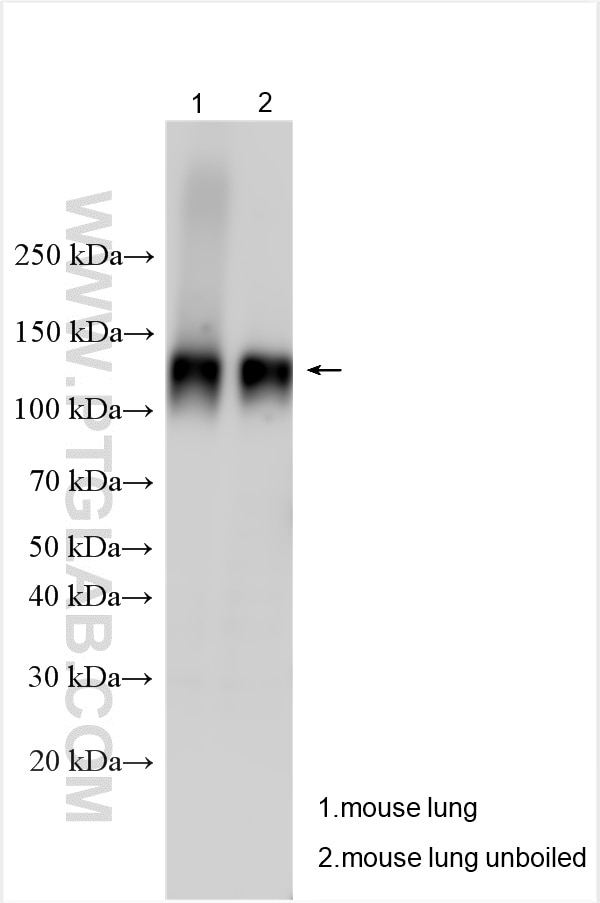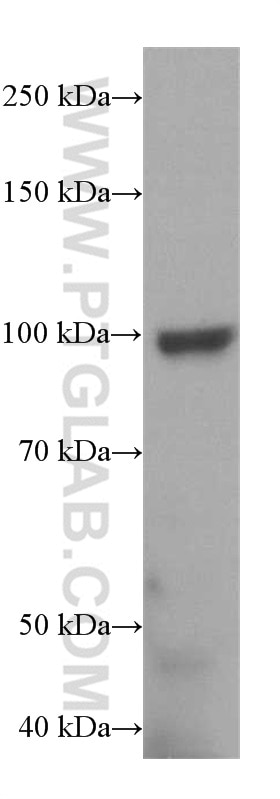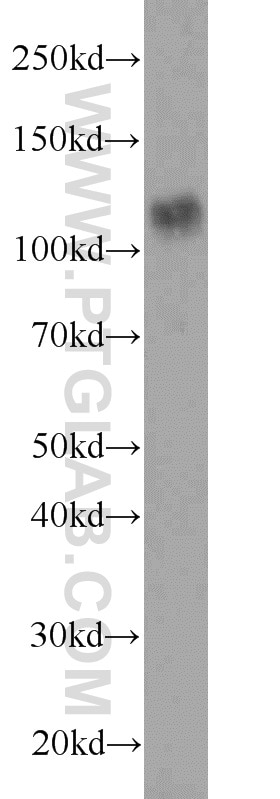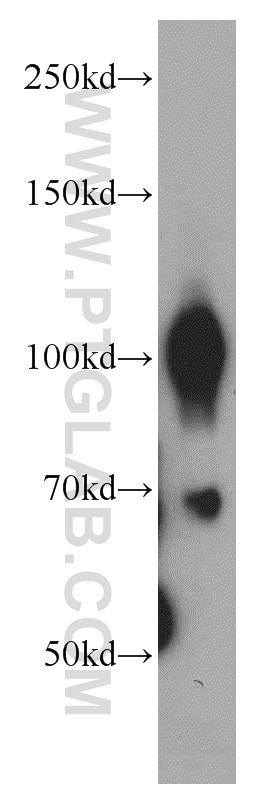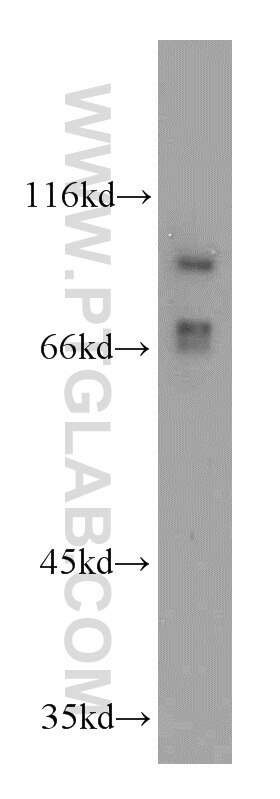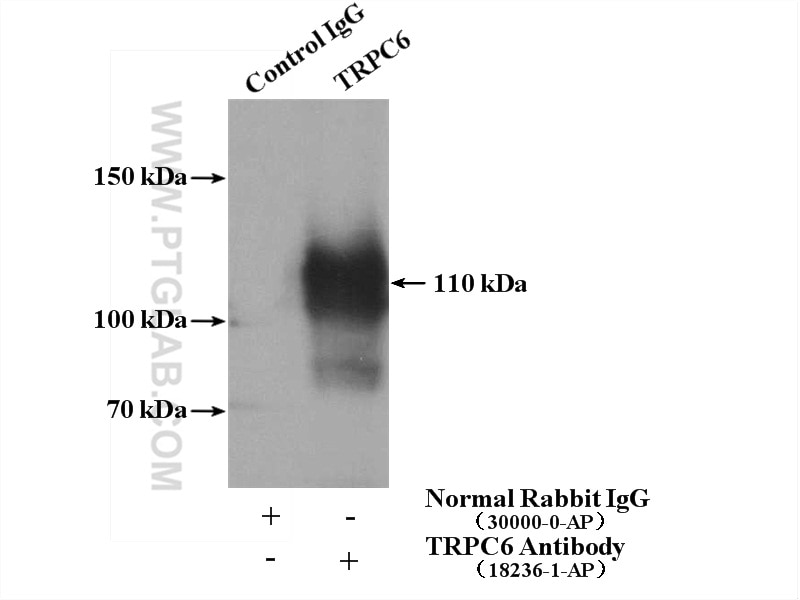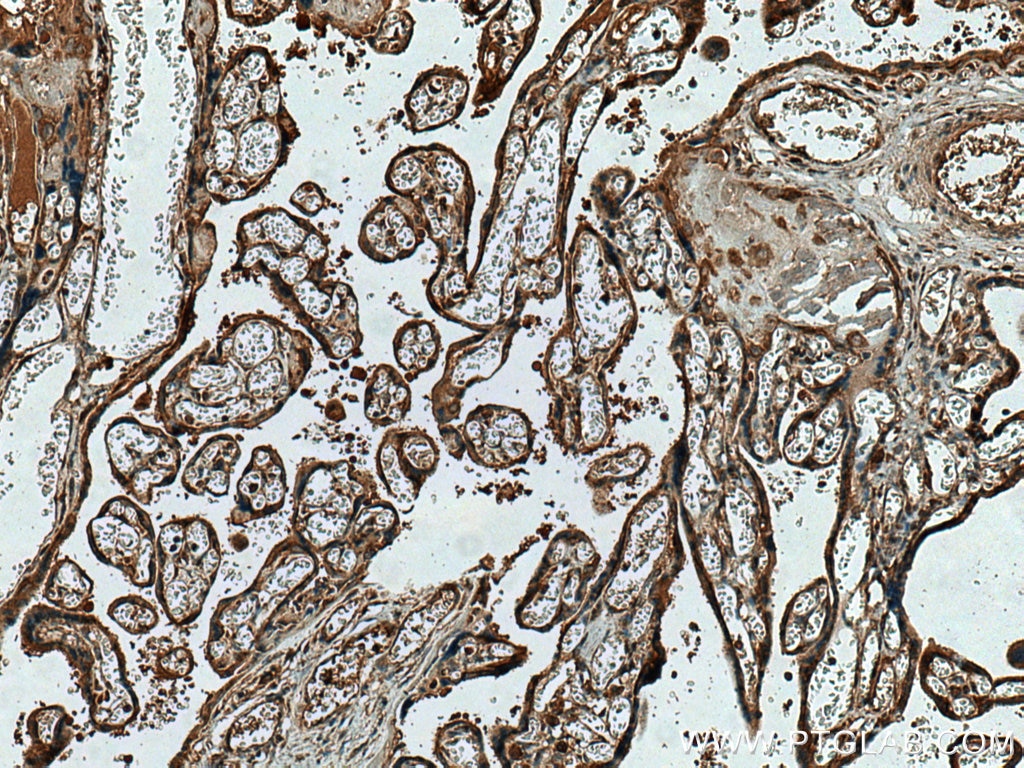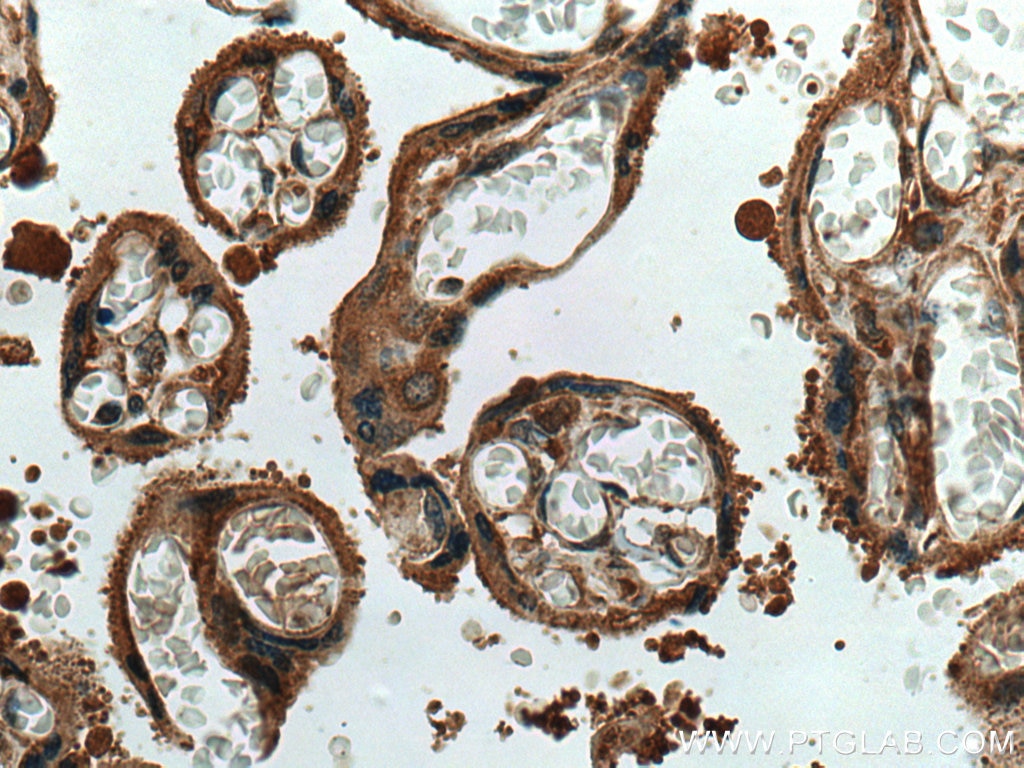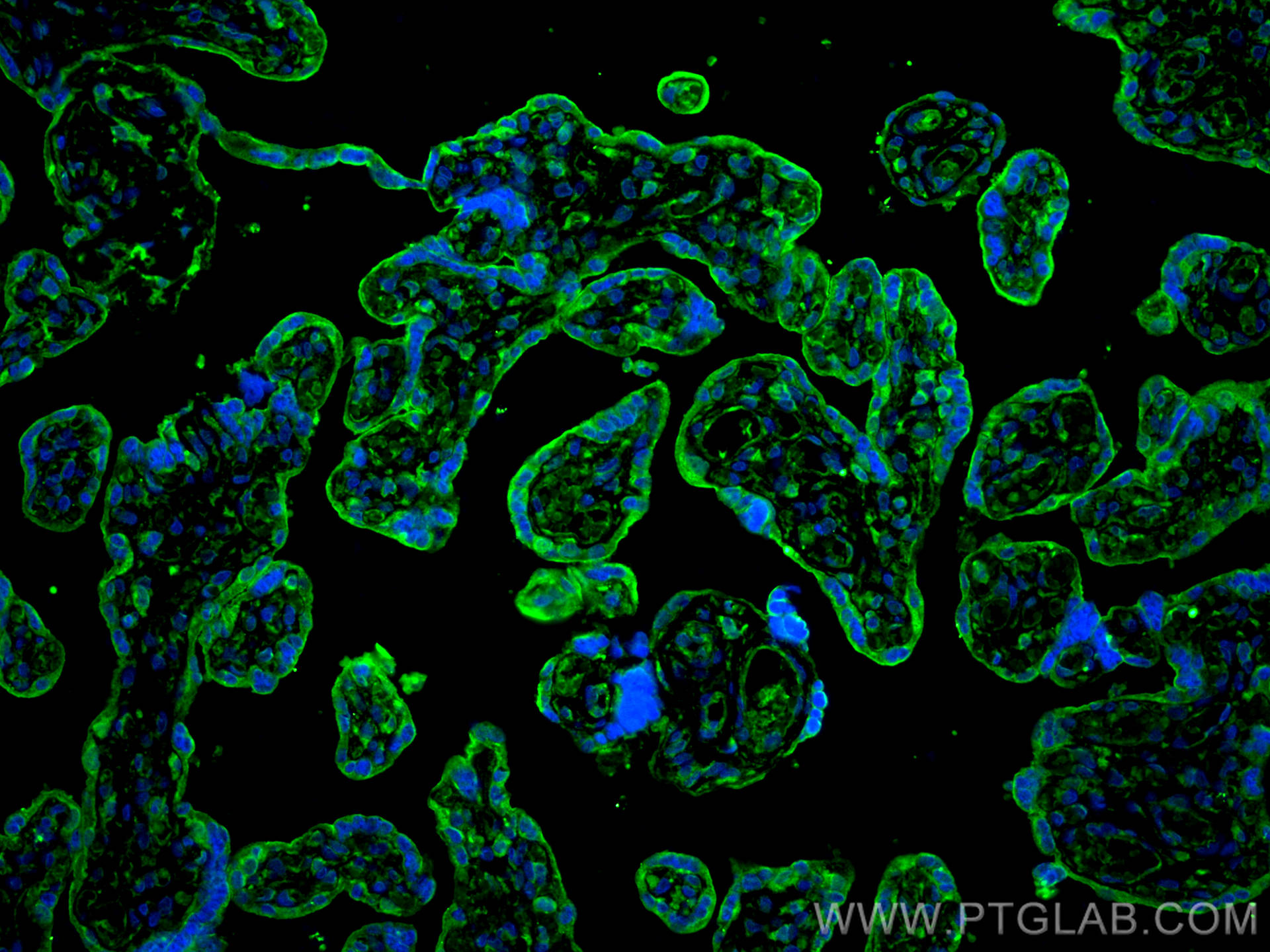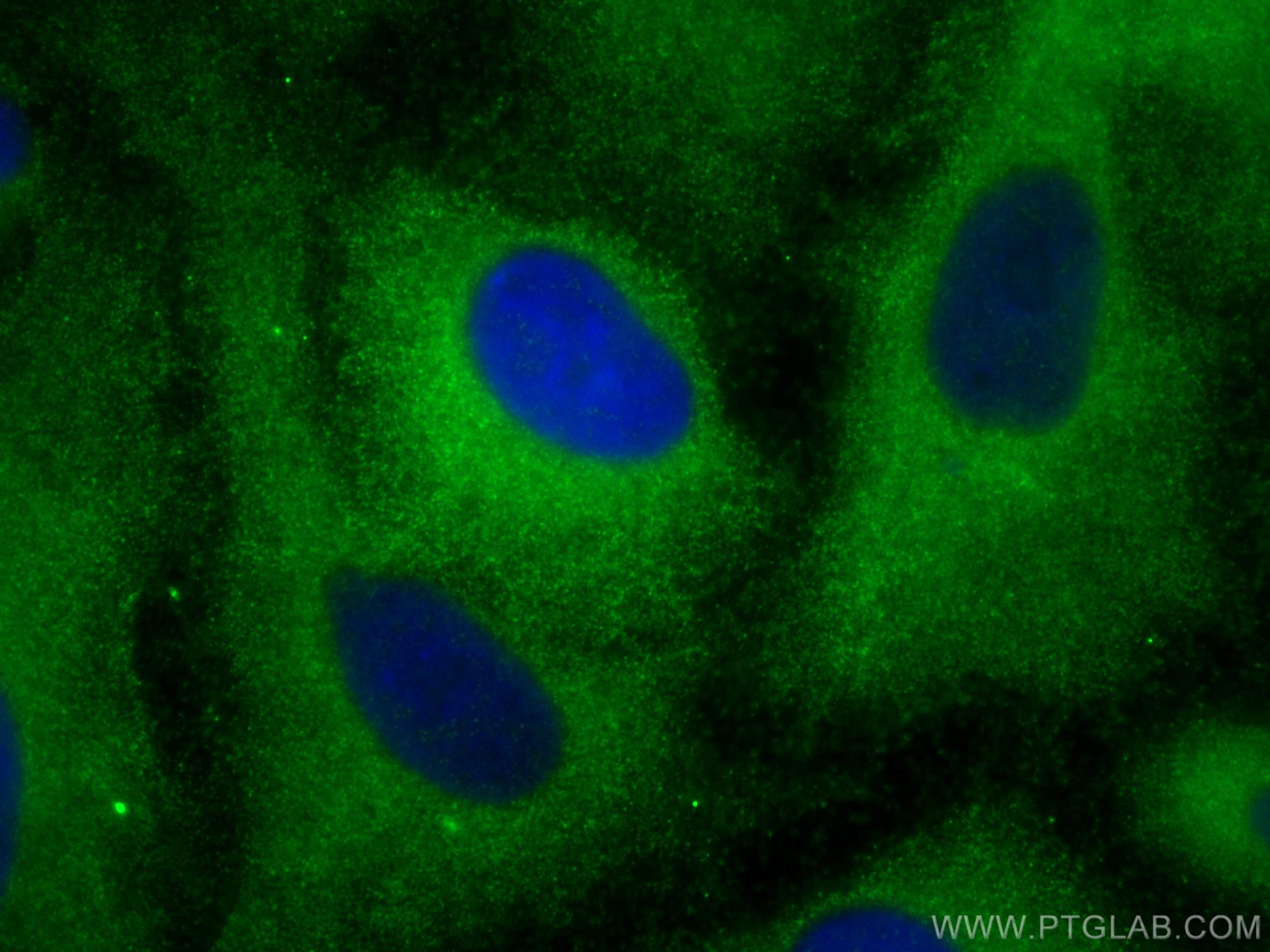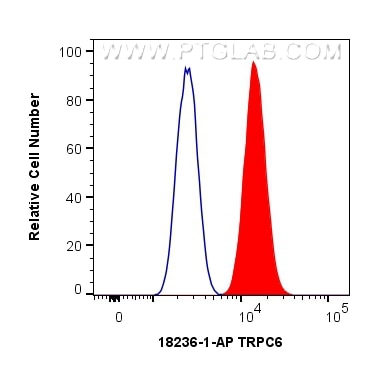- Phare
- Validé par KD/KO
Anticorps Polyclonal de lapin anti-TRPC6
TRPC6 Polyclonal Antibody for WB, IHC, IF/ICC, IF-P, FC (Intra), IP, ELISA
Hôte / Isotype
Lapin / IgG
Réactivité testée
Humain, souris et plus (1)
Applications
WB, IHC, IF/ICC, IF-P, FC (Intra), IP, ELISA
Conjugaison
Non conjugué
N° de cat : 18236-1-AP
Synonymes
Galerie de données de validation
Applications testées
| Résultats positifs en WB | tissu pulmonaire de souris, cellules COLO 320, tissu cérébral de souris |
| Résultats positifs en IP | tissu pulmonaire de souris |
| Résultats positifs en IHC | tissu placentaire humain, il est suggéré de démasquer l'antigène avec un tampon de TE buffer pH 9.0; (*) À défaut, 'le démasquage de l'antigène peut être 'effectué avec un tampon citrate pH 6,0. |
| Résultats positifs en IF-P | tissu placentaire humain, |
| Résultats positifs en IF/ICC | cellules A549, |
| Résultats positifs en FC (Intra) | cellules A549, |
Dilution recommandée
| Application | Dilution |
|---|---|
| Western Blot (WB) | WB : 1:500-1:3000 |
| Immunoprécipitation (IP) | IP : 0.5-4.0 ug for 1.0-3.0 mg of total protein lysate |
| Immunohistochimie (IHC) | IHC : 1:50-1:500 |
| Immunofluorescence (IF)-P | IF-P : 1:50-1:500 |
| Immunofluorescence (IF)/ICC | IF/ICC : 1:200-1:800 |
| Flow Cytometry (FC) (INTRA) | FC (INTRA) : 0.40 ug per 10^6 cells in a 100 µl suspension |
| It is recommended that this reagent should be titrated in each testing system to obtain optimal results. | |
| Sample-dependent, check data in validation data gallery | |
Applications publiées
| KD/KO | See 2 publications below |
| WB | See 11 publications below |
| IHC | See 1 publications below |
| IF | See 9 publications below |
| IP | See 1 publications below |
Informations sur le produit
18236-1-AP cible TRPC6 dans les applications de WB, IHC, IF/ICC, IF-P, FC (Intra), IP, ELISA et montre une réactivité avec des échantillons Humain, souris
| Réactivité | Humain, souris |
| Réactivité citée | rat, Humain, souris |
| Hôte / Isotype | Lapin / IgG |
| Clonalité | Polyclonal |
| Type | Anticorps |
| Immunogène | TRPC6 Protéine recombinante Ag12976 |
| Nom complet | transient receptor potential cation channel, subfamily C, member 6 |
| Masse moléculaire calculée | 931 aa, 106 kDa |
| Poids moléculaire observé | 100-110 kDa |
| Numéro d’acquisition GenBank | BC093658 |
| Symbole du gène | TRPC6 |
| Identification du gène (NCBI) | 7225 |
| Conjugaison | Non conjugué |
| Forme | Liquide |
| Méthode de purification | Purification par affinité contre l'antigène |
| Tampon de stockage | PBS with 0.02% sodium azide and 50% glycerol |
| Conditions de stockage | Stocker à -20°C. Stable pendant un an après l'expédition. L'aliquotage n'est pas nécessaire pour le stockage à -20oC Les 20ul contiennent 0,1% de BSA. |
Informations générales
Transient receptor potential canonical (TRPC) channels mediate the influx of different types of cations through the cell membrane and are involved in many functions of the organism (PMID: 28508319). The TRPC subfamily consists of seven members, TRPC1, TRPC2, TRPC3, TRPC4, TRPC5, TRPC6, TRPC7 (PMID: 32872338). TRPC6 is a Ca(2+)-permeable non-selective cation channel expressed in most human tissues. TRPC6 has been considered as potential therapeutic targets for malignant glioma treatment (PMID: 35489424).
Protocole
| Product Specific Protocols | |
|---|---|
| WB protocol for TRPC6 antibody 18236-1-AP | Download protocol |
| IHC protocol for TRPC6 antibody 18236-1-AP | Download protocol |
| IF protocol for TRPC6 antibody 18236-1-AP | Download protocol |
| IP protocol for TRPC6 antibody 18236-1-AP | Download protocol |
| FC protocol for TRPC6 antibody 18236-1-AP | Download protocol |
| Standard Protocols | |
|---|---|
| Click here to view our Standard Protocols |
Publications
| Species | Application | Title |
|---|---|---|
J Hazard Mater Epigenetic reprogramming of HDAC2 in CA1 excitatory neurons determines Pb-induced non-spatial memory deficits | ||
Biomaterials Nongenetic optical modulation of neural stem cell proliferation and neuronal/glial differentiation. | ||
Proc Natl Acad Sci U S A TRPC6 channel translocation into phagosomal membrane augments phagosomal function.
| ||
Phytomedicine Deciphering the pharmacological mechanisms of Rostellularia procumbens (L) Nees. Extract alleviates adriamycin-induced nephropathy in vivo and in vitro | ||
Br J Pharmacol Catalpol Alleviates Adriamycin-Induced Nephropathy by Activating the SIRT1 Signalling Pathway In Vivo and In Vitro. |
